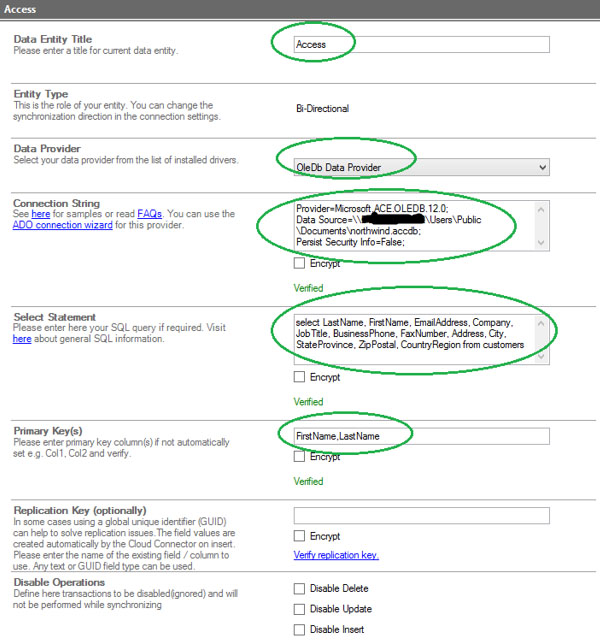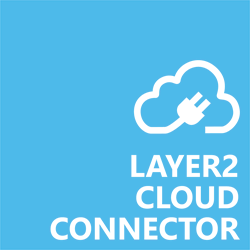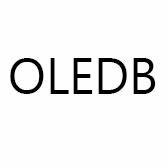Keep your Sharepoint in sync. Download and try today.
OLEDB Integration and Synchronization
OLEDB compliant data sources can be integrated and synchronized codeless with various other data sources using the Layer2 Cloud Connector via the OLEDB Data Provider. Please take a look here for supported systems and applications.
OLEDB (Object Linking and Embedding, Database, sometimes written as OLEDB or OLE-DB), an API designed by Microsoft, allows accessing data from a variety of sources in a uniform manner. The API provides a set of interfaces implemented using the Component Object Model (COM). It is especially helpful to connect to older systems and applications. Please make use of the 32-bit version of the Layer2 Cloud Connector to integrate such type of databases (even under 64-bit operating systems). For newer systems please check for availability of ADO.NET-based providers instead of OLEDB for more features and better performance depending on implementation.
To connect to an OLEDB compliant data source the data source entity must be configured as follows in the Layer2 Cloud Connector Connection Manager:

Fig.: Sample connection configuration to connect to Microsoft Access data via OLEDB.
OLEDB Codeless Integration And Synchronization Specific Settings
Please note the following specific settings.
- Select the OLEDB Data Provider to connect. The provider is part of the Windows Operating System and should be already installed.
- Install the vendor-specific OLEDB driver. Note that the driver architecture must fit to the Cloud Connector version installed (32- or 64-bit).
- Follow the vendor instructions to setup and configure. See here for an example to setup an OLEDB data source.
- You can use a connection string like this to
connect:
Provider=myProvider; Data Source=myDataSource;
Please find more details about ODBC options at www.connectionstrings.com. - You can make use of OLEDB to query your data as supported by the data provider and source system. For any specification of query language supported see vendor documentation.
- You can map your data fields to specific external source fields in the Layer2 Cloud Connector. Please take care about data types (simple type conversions are supported).
- Please enter an appropriate primary key (column with unique values), depending on query (see data preview for this).
- You can use the connection for uni- or bi-directional synchronization. In case of inserts (full CRUD) via external systems please take care of the primary key. Database-side IDs will not work in his case.
- No installation or changes are required at the ODBC data source or data destination.
- Data synchronization can be started manually in the Connection Manager, per command line or scheduled in background by the Layer2 Cloud Connector Windows Service. Only data changes are processed (no delete / bulk import).
- No programming required for setup a connection and sync.
- No need to open your local network for access from outside.
Step-by-Step Intros For ODBC Integration and Synchronization
Just some ideas about systems to connect and sync:
- Sync with local SQL or SQL Azure for better reporting.
- Sync with Microsoft Exchange (on-premises or online) for notifications, tasks, calendar events, mobile access and offline availability on any device.
- Sync with 3rd party tools like ERP/CRM/CMS based on SQL databases like Oracle, mySQL or Microsoft SQL Server.
- Sync Microsoft Access with Microsoft SharePoint or Office 365 via OLEDB for better collaboration (for example with customers or partners) or for intranet publishing.
- Sync Excel data with SharePoint Online.
Do you have connected more? Just let us know. Can't find what you are looking for? Please contact sales@layer2solutions.com directly for more information.
Ready to go next steps?




